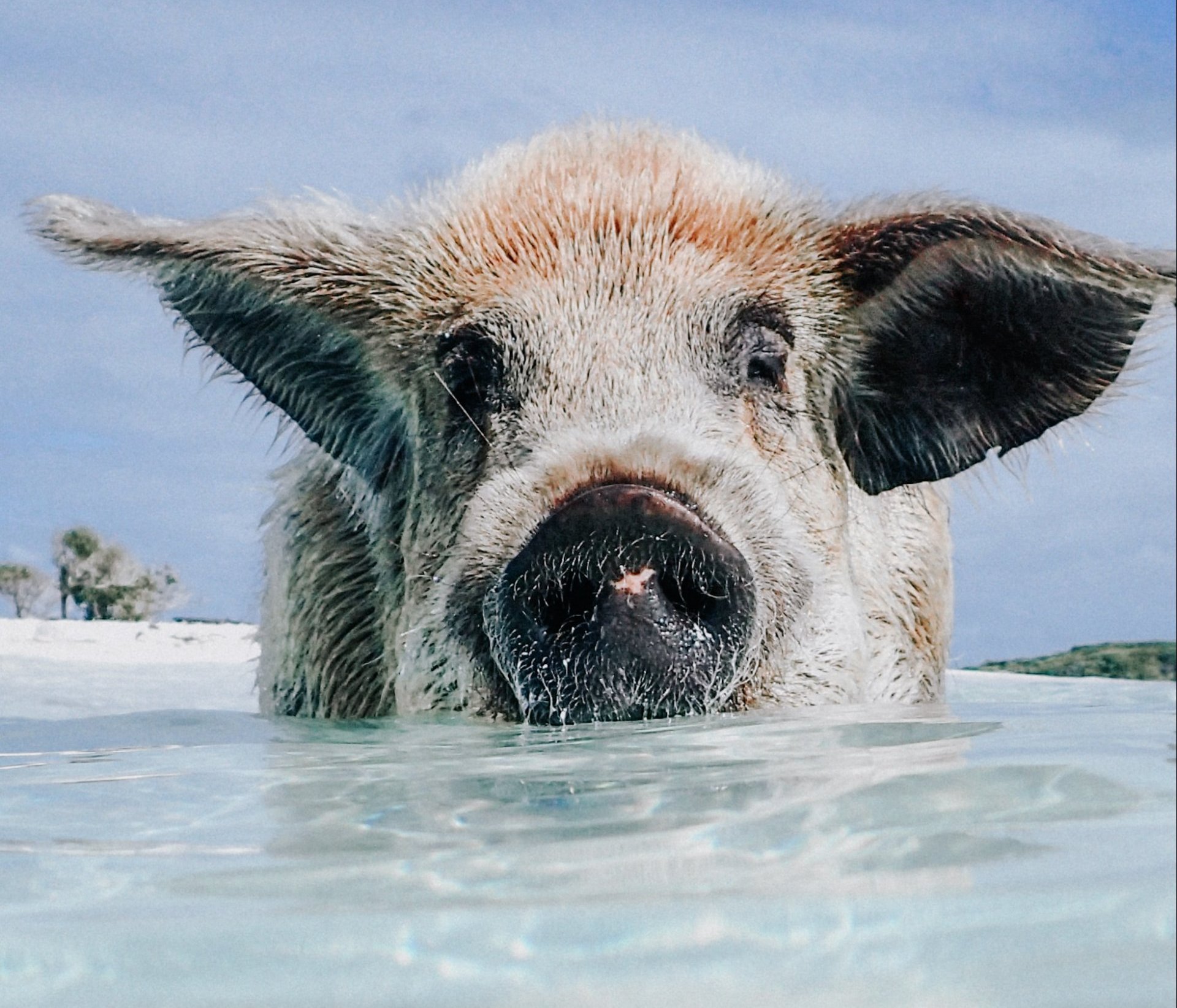Suffering and Death: What Instagram Doesn’t Show You About ‘Pig Beach’
Sometimes seen on the feeds of vacationing social media influencers, Big Major Cay—the island in the Bahamas known for its population of swimming pigs—is yet another tourist trap that exploits animals for tours and photo ops. The pigs—who are not native to the island—suffer when used for stressful interactions with humans.
This Tourist Trap is Deadly for Pigs
In 2017, more than half a dozen pigs were reportedly found dead on Big Major Cay. According to reports, the animals’ bodies were subsequently tossed out to sea.
Wayde Nixon, a Bahamas resident who claims to have brought the pigs to the island decades ago, suggested that tourists may have killed them with a lethal diet. Anyone visiting the island has unlimited access to the pigs, and rowdy tourists have been known to abuse them.
Necropsies of the pigs revealed that they had likely died from ingesting fatal amounts of sand—a possible result of tourists’ habit of leaving scraps of food on the beaches, something that’s all too common at Pig Beach. There’s little vegetation on the island, and the animals rely on food from tourists—some of whom purportedly supply them with alcohol and junk food.
These interactions put tourists in danger as well since these hungry pigs have been known to bite visitors.
Something You Won’t See on Instagram
Pigs aren’t native to the Caribbean, and their pale, sensitive skin can easily burn when exposed to strong sunlight day after day. Tourists have reported seeing peeling skin and abrasions on piglets forced to live in these tropical conditions without any mud (their natural sunblock) to roll around in.
The adult pigs are reportedly slaughtered as a means of “population control”—a morbid report that, of course, doesn’t make it into the ads and brochures that promote this travel destination. Pigs have an average of 10 piglets per litter and can have two or three litters a year. Due to high birth rates and the availability of food from tourists, the pig population is exploding.
Travel With Compassion
More “pig islands” are popping up in the Bahamas, and animals are paying the deadly price.
Speak out against tourist traps like Pig Beach and other “attractions” that use animals for photo ops or encounters with visitors. Instead, choose one of the countless humane activities available in every part of the world—such as going to a national park to see animals living free in their natural habitat. You’ll return home with great memories—and a clear conscience.


